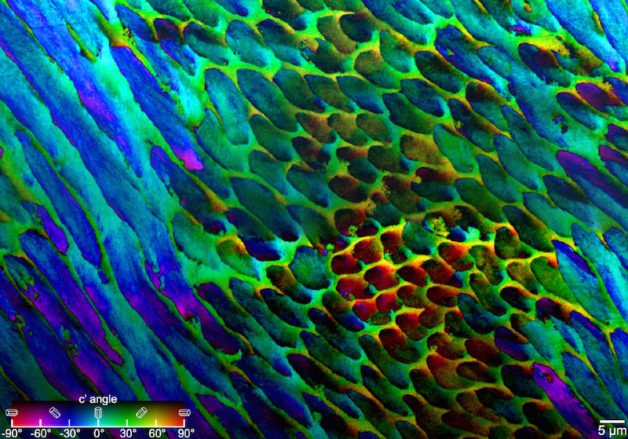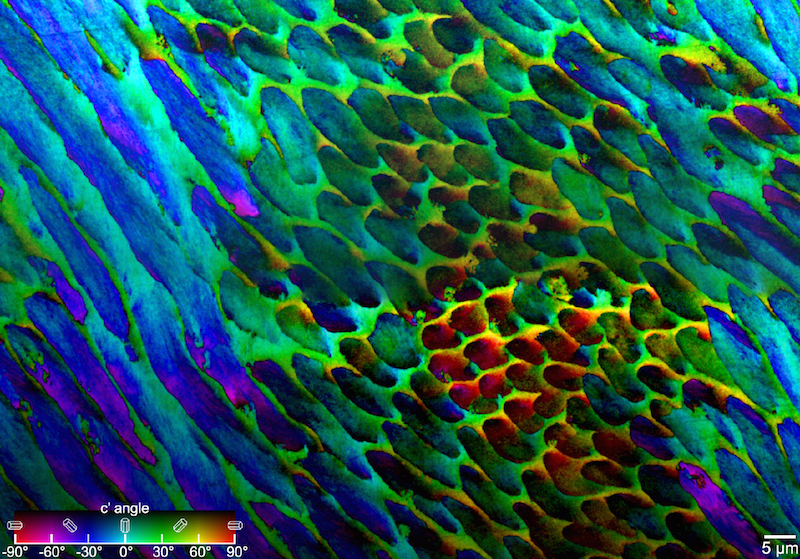
In this cross-sectional map of the rod-shaped crystals that make up human tooth enamel, different colors indicate different crystal orientations. (Credit: Pupa Gilbert/University of Wisconsin)
Adult teeth can last a lifetime, withstanding enormous chewing pressures applied hundreds of times each day for decades. In a recent study published in Nature Communications, researchers discovered a natural toughening mechanism: small misorientations among the nanocrystal building blocks of human tooth enamel.
Enamel is composed of hydroxyapatite, a biomineral that forms long and thin 50-nanometer wide nanocrystals, bundled into rods like uncooked spaghetti in tubes. Previously, it was assumed that the nanocrystals’ internal structures (their lattices) were oriented in the same direction as the long axes of the rods and “spaghetti.”
But when the researchers studied enamel samples using X-rays produced by Berkeley Lab’s Advanced Light Source, they detected slight differences in the lattice orientations. “While the spaghetti nanocrystals are aligned parallel to each other,” said co-author and University of Wisconsin Professor of Physics Pupa Gilbert, “their crystal lattices are slightly misoriented from one nanocrystal to another.”
Computer simulations confirmed that slight misorientations are effective at preventing nanoscale cracks from spreading, thus protecting the enamel from catastrophic failure. Not only do the results help explain how human tooth enamel can last a lifetime, they also provide insight into strategies for designing similarly tough bio-inspired synthetic materials.
Read the full story here.
